Synonymous with paradise, God created the Garden of Eden as a home for the first man and woman. After God cast Adam and Eve out of the garden for their disobedience, what happened to it? Was Eden an idea alone or a physical location, as the Bible seems to imply?
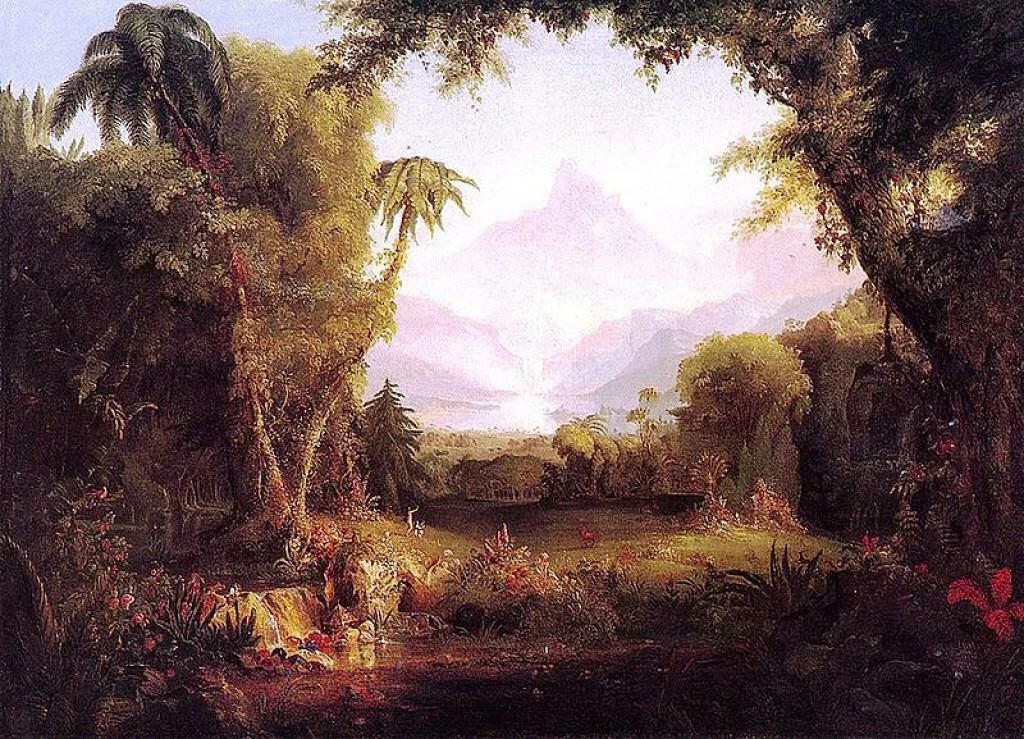
Eden in the Book of Genesis
According to Genesis 2:8-15, God created the Garden of Eden following the seventh day.
8: And the Lord God planted a garden in Eden, in the east; and there he put the man whom he had formed. 9: Out of the ground the Lord God made to grow every tree that is pleasant to the sight and good for food, the tree of life also in the midst of the garden, and the tree of the knowledge of good and evil. 10: A river flows out of Eden to water the garden, and from there it divides and becomes four branches. 11: The name of the first is Pishon; it is the one that flows around the whole land of Havilah, where there is gold; 12: and the gold of that land is good; bdellium and onyx stone are there. 13: The name of the second river is Gihon; it is the one that flows around the whole land of Cush. 14: The name of the third river is Tigris, which flows east of Assyria. And the fourth river is the Euphrates. 15: The Lord God took the man and put him in the garden of Eden to till it and keep it.
As Genesis continues, Adam and Eve disobey God’s command by eating from the tree of the knowledge of good and evil. God cast them out of Eden, and humanity lost the glorious garden.
Tigris and Euphrates
Genesis names the four rivers branching from the first river that flows from Eden. The Tigris and Euphrates (Gen. 2:14) run about 1000 miles from headwaters in eastern Turkey through Iraq, converging and emptying into the Persian Gulf. These twin rivers created the cradle of civilization, or Mesopotamia, the ancient Greek name for “the land between the rivers.”
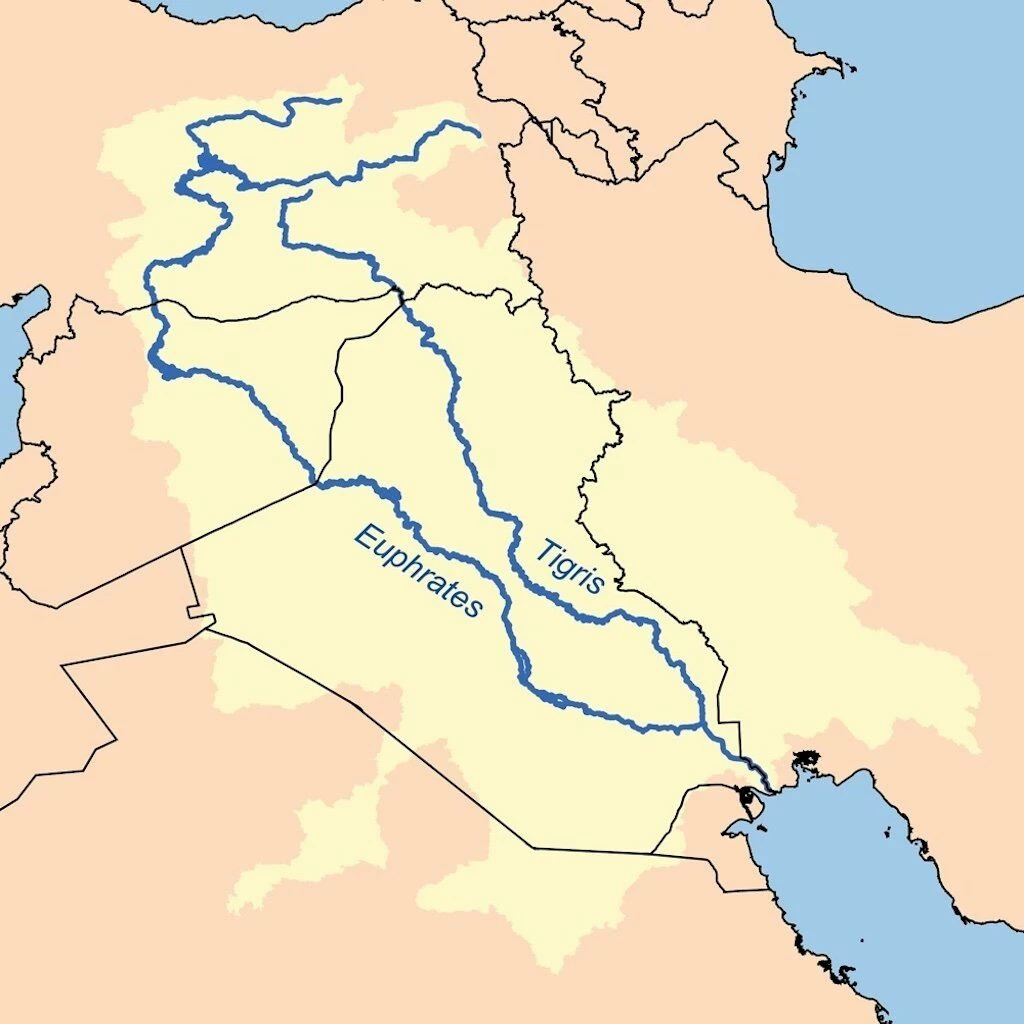
Pishon and Gihon
The location of Gihon and Pishon (Gen. 2:11-13) remains unknown. The courses of the Euphrates and particularly the faster-flowing Tigris have shifted over the millennia. The Pishon and Gihon may have been ancient tributaries or branches of these two mighty rivers. These few geographical clues about Eden from Genesis lead us to Mesopotamia or modern-day Iraq.
Eden and Mesopotamia
The idea of Eden doesn’t originate with the Hebrew Bible, but in earlier Mesopotamia, the home of ancient Sumerians, Babylonians, Akkadians, Assyrians, Kassites, and Hebrews. The name Eden is not Hebrew but originates in another Semitic language, Akkadian. Edinu, or edin, means plain or uncultivated land.
Connections in the Old Testament and Mesopotamian Literature
Early Mesopotamian traditions frequently overlap with many stories of the Old Testament. The Babylonian creation epic, Enuma Elish, features the creation of the world and humanity, the flood, and a covenant between the gods and humanity. The Epic of Atrahasis includes another account of the flood and a Noah-like leader Atrahasis who saves humanity from destruction. Many different Mesopotamian stories recount the creation of humanity. Some involve dirt or clay, and some endow humans with a divine spirit. Mesopotamian literature also offers parallels to the Garden of Eden.
Epic of Gilgamesh: The Garden of Gemstones
The Epic of Gilgamesh begins in the third millennium in Uruk, the foundational city of Iraq. Written in cuneiform around 1800 BCE, the 10-tablet epic recounts the journey for wisdom by the young king Gilgamesh. In Tablet X, following an arduous trek through deserts and mountains, he arrives at a fantastic and bountiful garden by the sea.
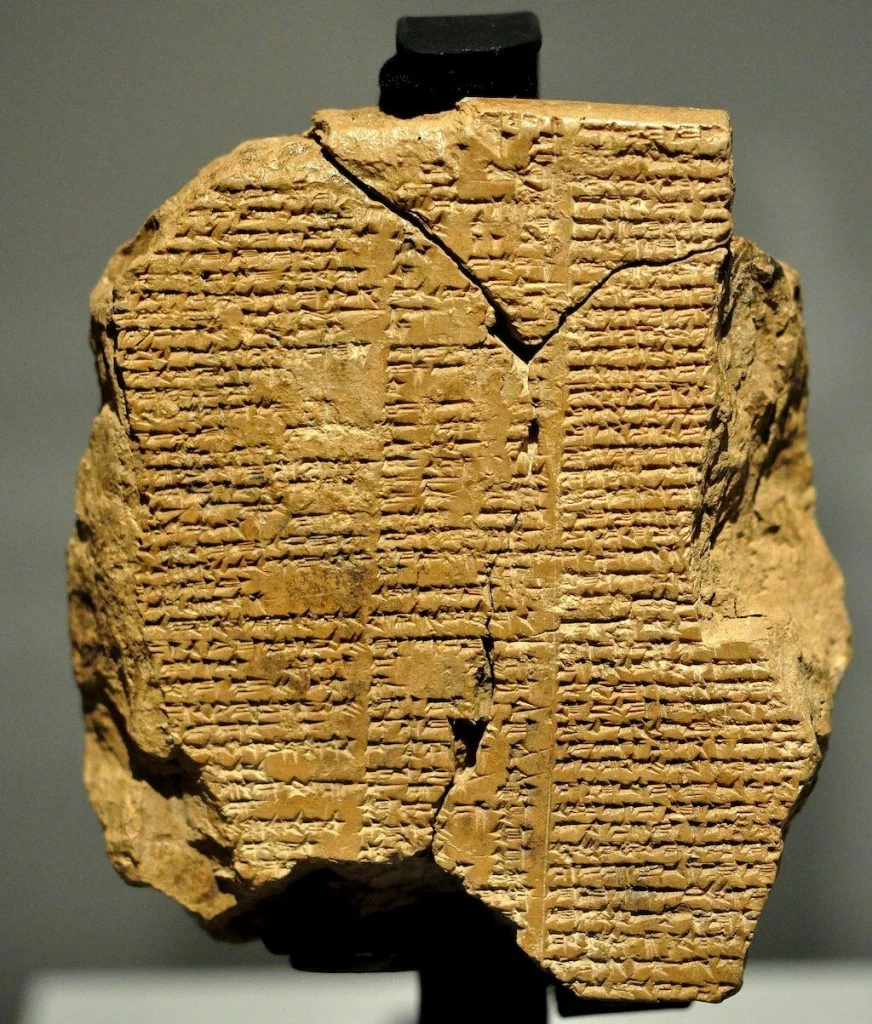
The surviving tablets are badly broken but tell of
thorny, prickly, spiky bushes… blossoming with gemstones. Carnelian bore fruit handing in clusters, lovely to look at, Lapis lazuli bore foliage, bore fruit, and was delightful to view.
Dalley, 2008
The beautiful and verdant setting echoes some details from Genesis.
Epic of Gilgamesh: Enkidu’s Origins
In Tablet I of the same epic, Gilgamesh’s partner Enkidu is born into an Edenic setting. The goddess Aruru forms Enkidu of clay and casts him into the countryside. There he lived, dressed, and ate like the animals until a woman opened his eyes to civilization by clothing him and feeding him the food of mankind. Once so enlightened, the animals rejected Enkidu, and he became an outcast from nature.
You May Also Like: Hanging Gardens of Babylon May Have Been in Ninevah
Enkidu’s origins, control of animals, and transformation mirror those of Adam. While Enkidu didn’t live in a garden, he lived in a state of paradise, the plains (edin) of Mesopotamia.
Eridu and the Ubaid Civilization
If looking for historical analogs to Edin, archaeologists might point to the earliest civilization of southern Mesopotamia. The Ubaid culture of the Tigris-Euphrates marshlands built the first city of Mesopotamia at Eridu.
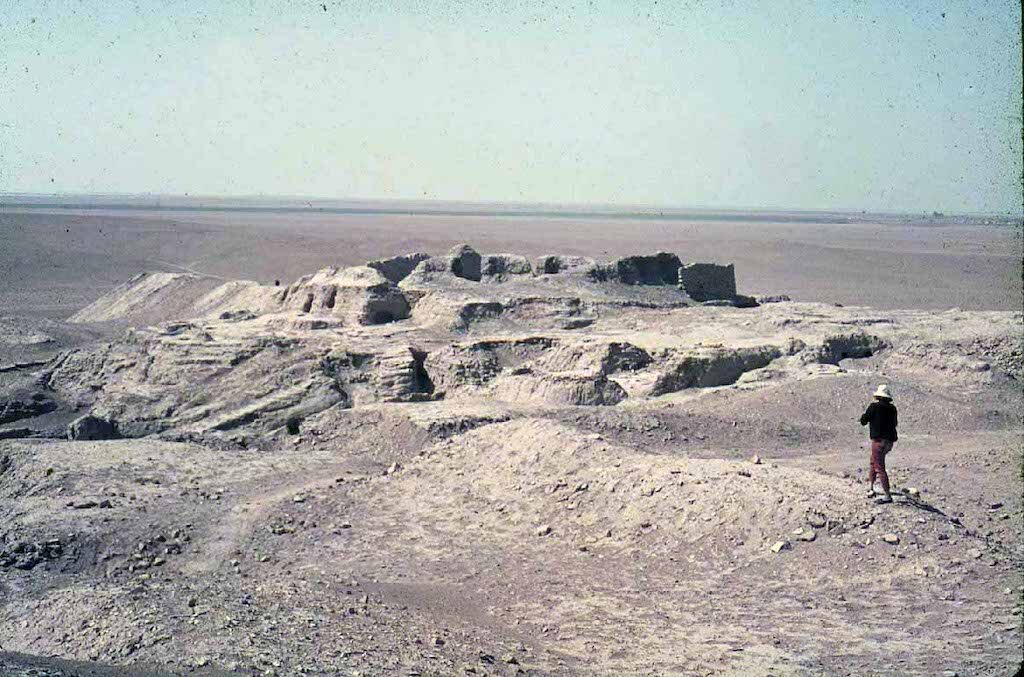
The ruins of Eridu are found today in a desert landscape. However, 8000 years ago, the Persian Gulf extended much further inland. Fertile marshes fed by the Euphrates surrounded the city of Eridu. The inhabitants would have benefited from a highly diversified ecosystem. They relied on freshwater fish, birds, animals, marine life from the Persian Gulf, and products from irrigated farmlands on the city’s outskirts. While only a small number of people would have lived in Eridu, they would not have lacked resources.
E-abzu: First Home of the Gods
Around 5500 BCE, the people of Eridu built the first temple of Mesopotamia. This small mud-brick structure was about 15 feet long and sitting atop a small mound. This temple was E-abzu, dedicated to Enki, the God of fresh water and creator of humans in Sumerian tradition.
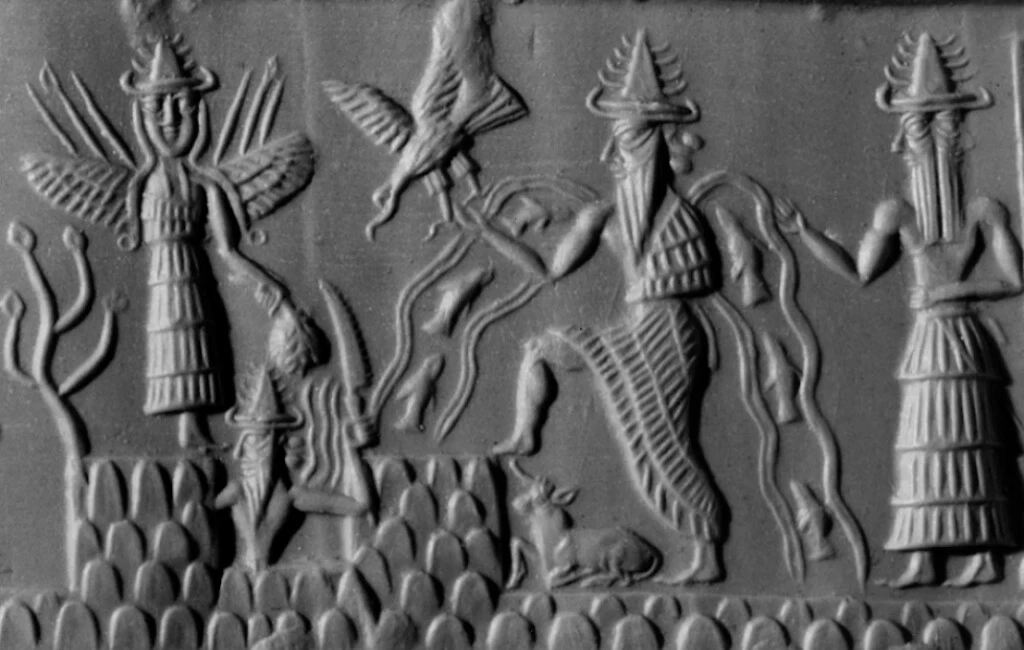
Mesopotamian art depicts Enki with freshwater streaming from his shoulders. Eridu and Enki feature in many Sumerian and later Mesopotamian stories as the first home of the gods and as a site that survives a devastating global flood. Eridu was Mesopotamia’s first civilization, just as Eden was the first home to humanity in Genesis.
Is the Garden of Eden Real or an Imagined Place?
So was the Garden of Eden a real place or a state of paradise? That may be best left to the reader to decide. A survey of Biblical literature, Mesopotamian texts, and Sumerian archaeology led us to many clues of Eden’s origin as an idea. Therefore, like the Holy Grail and the Ark of the Covenant, the physical Garden itself remains elusive.
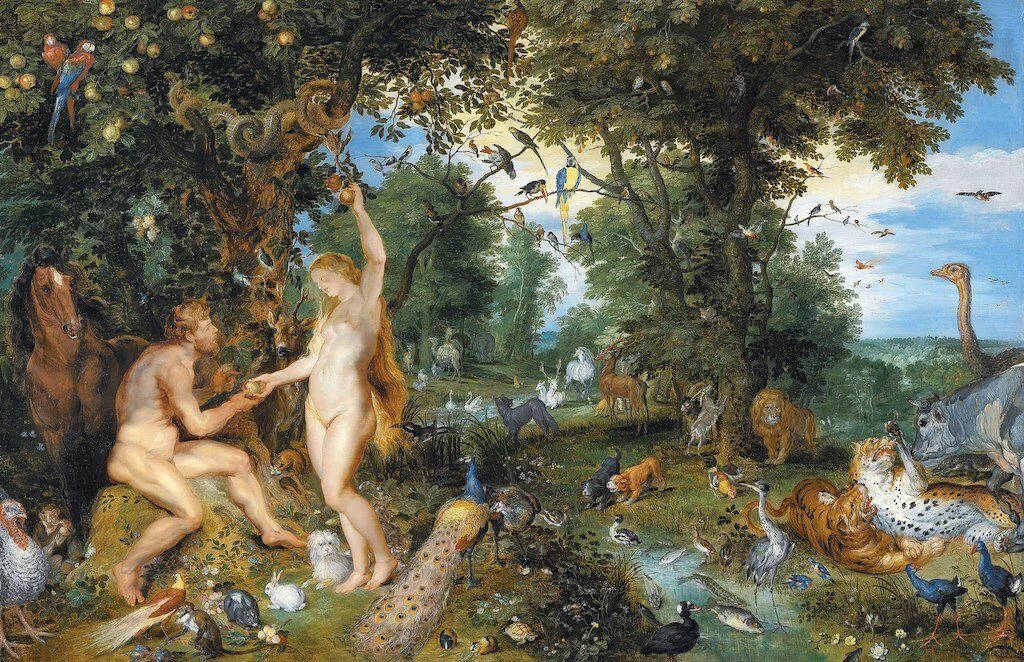
References (links to Amazon):
Eric Cline and Mark Graham, Ancient Empires: From Mesopotamia to the Rise of Islam (Cambridge University Press, 2011).
Stephanie Dalley, Myths from Mesopotamia (Oxford World’s Classics, 2008).
Gwendolyn Leick, Mesopotamia: The Invention of the City (Penguin, 2001).
Bruce Metzger and Roland Murphy, eds. The New Oxford Annotated Bible (Oxford University Press, 1991).
Edward L. Ochsenschlager, Iraq’s Marsh Arabs in the Garden of Eden (University of Pennsylvania Press, 2004).